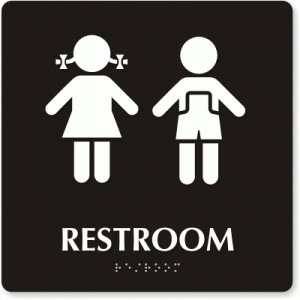
How do we make the theoretical tangible and personal? How do we show the expectations of a gendered being? How do we interrogate embodiment and the expectations beset on bodies? How do we understand our bodies as archives of the cultural and the personal? What do we learn when we turn to our archives? What do we have the ability to discern?
These are all questions that haunt me each time I teach my gender course. Showing how gender is lived becomes the primary way to push against simple views of biology or construction. What happens to bodies weighed down by cultural expectations and the reality of the flesh? The complicated mess of embodiment is essential to exploring how people live, past and present. Where does flesh end and culture begin? Can we even ask that question?
One of the ways I help students think about embodiment is to allow students to allow them to gender me. I stand in front of the class and ask them to analyze how I perform gender. The students, then, get to rate my performance of gender as a way to make the abstract theory real to them. But importantly, this exercise allows me to discuss gender habits, stereotypes, and subversion. I might appear “feminine” but the students pick up on my strategies of subversion too. Gendering me provides a mechanism to ground discussions of Judith Butler, Donna Harraway, Lise Elliot, and Joan Scott. How does my bodily performance demonstrate gender? In particular, I want them to think very carefully about the role of religion in our construction as gendered beings:
Religion defines men and women in intimate and powerful ways. But, class debates and my lectures on gender theories don’t always make these topics approachable for students. Gender emerges as something academic and distant rather than something personal and tangible. Ann Braude noted the still potent and important fact “women’s history is American religious history.” But, how can you convince students that gender matters historically and today in interpretations of religion and American culture? … My teaching approach to gender and religion has become much more personal and face-to-face. (Read more here).
I also want them to think about what it means that we are bodies and that we embody. The distinction is important. Flesh and culture make us what we are. They are imbricated and inseparable. We might imagine easy separation, but that is wishful thinking. Both are crucial to understanding how our bodies become archives of individual selves and the social body, more constrained than free. How are we made? This question pushes to the forefront. What makes us?
The body, I explained encouragingly, is a political, social, cultural and religious map. It is physical, material and biological, but it is also the repository of desire, ideology, need, imagination. It is an object, and it is an idea. The body is the archive of the physical, the social and the metaphysical. It is the site of me, you and us. What do I, this body, in front of all of you, embody? I ask them beseechingly. (Read more here).
Bodies and embodiment become methods to engage critical gender theory. The focus on both allows important discussion of what creates (and arguably destroys) human beings. This process of making/destroying/imagining bodies is never neutral. We need to recognize this and point to the consequences. Our bodies are archives of the all the attempts to craft us. Interrogating our body and what we embody allows us to see the normative and the subversive, affirmation and negation, joy and trauma, and the social and the individual. All enmeshed together to create what we are.
Pingback: Teaching Bodies and Embodiment | Bulletin for the Study of Religion
Pingback: Teaching Bodies and Embodiment | Bulletin for the Study of Religion